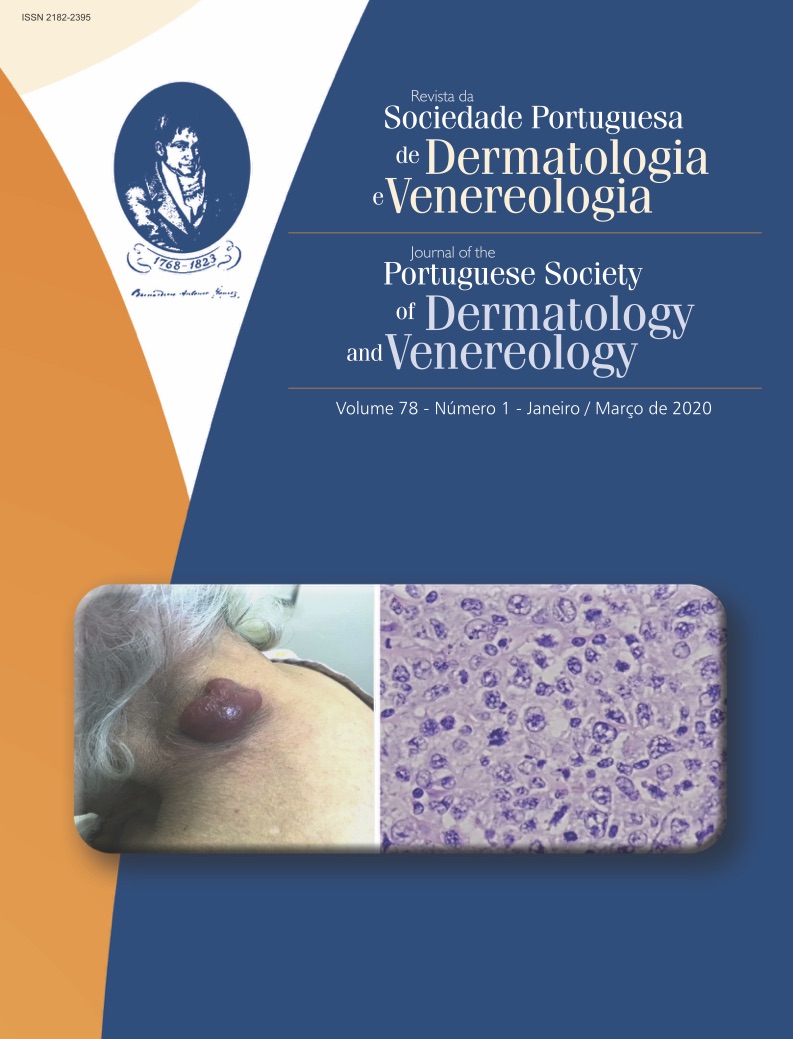Predictive Value of the First Non-Melanoma Skin Cancer: A Retrospective Study
Abstract
Introduction: Patients with previous non-melanoma skin cancer have an increased risk of developing another skin cancer and some studies suggest that the histological type of the incident tumour can predict the one of the subsequently diagnosed. The aim of this study was to assess a correlation between the histological type of the first and the subsequent non-melanoma skin cancer diagnosed in immunocompetent patients and in different settings of immunosuppression.
Methods: A retrospective study was conducted on all patients without previous skin cancer, with the diagnosis of two or more non-melanoma skin cancer between January 1st, 2008 and December 31th, 2017.
Results: A total of 413 patients were included. Fifty-one individuals (12.4%) were immunosuppressed. There was a significative association between the histological type of the first and the subsequent non-melanoma skin cancer diagnosed both in immunocompetent and in immunosuppressed patients, with a higher probability of developing a tumour of the same histological type (p<0.001). This association was also significative in patients with the diagnosis of a hematologic malignancy. The mean interval between the two diagnoses was 30 months (range 7-111). Forty-three patients (10.4%) presented a subsequent tumour after more than five years of follow-up.
Conclusion: The histological type of the incident non-melanoma skin cancer predicted the risk of developing another tumour of the same type. For the first time, we showed this correlation in patients with a hematologic malignancy. High-risk individuals may benefit from a long-lasting follow-up of at least ten years.
Downloads
References
Global Burden of Disease Cancer Collaboration. Global, Regional, and National Cancer Incidence, Mortality, Years of Life Lost, Years Lived With Disability, and Disability-Adjusted Life-years for 32 Cancer Groups, 1990 to 2015A Systematic Analysis for the Global Burden of Disease Study. JAMA Oncol. 2017;3:524-48. doi: 10.1001/jamaoncol.2016.5688.
Lomas A, Leonardi-Bee J, Bath-Hextall F. A systematic review of worldwide incidence of nonmelanoma skin cancer. Br J Dermatol. 2012;166:1069-80. doi: 10.1111/j.1365-2133.2012.10830.x.
Rogers HW, Weinstock MA, Feldman SR, Coldiron BM. Incidence estimate of nonmelanoma skin cancer (keratinocyte carcinomas) in the US Population, 2012. JAMA Dermatol. 2015;151:1081-6. doi: 10.1001/jamadermatol. 2015.1187.
Marcil I, Stern RS. Risk of developing a subsequent nonmelanoma skin cancer in patients with a history of nonmelanoma skin cancer: a critical review of the literature and meta-analysis. Arch Dermatol. 2000;136:1524-30.
Flohil SC, van der Leest RJ, Arends LR, de Vries E, Nijsten T. Risk of subsequent cutaneous malignancy in patients with prior keratinocyte carcinoma: a systematic review and meta-analysis. Eur J Cancer. 2013;49:2365-75. doi: 10.1016/j.ejca.2013.03.010.
Duarte AF, Sousa-Pinto B, Haneke E, Correia O. Risk factors for development of new skin neoplasms in patients with past history of skin cancer: A survival analysis. Sci Rep. 2018;8:15744. doi: 10.1038/s41598-018-33763-7.
Tessari G, Naldi L, Boschiero L, Nacchia F, Fior F, Forni A, et al. Incidence and clinical predictors of a subsequent nonmelanoma skin cancer in solid organ transplant recipients with a first nonmelanoma skin cancer: a multicenter cohort study. Arch Dermatol. 2010;146:294-9. doi: 10.1001/archdermatol.2009.377.
Wisgerhof HC, Edelbroek JR, de Fijter JW, Haasnoot GW, Claas FH, Willemze R, et al. Subsequent squamous-and basal-cell carcinomas in kidney-transplant recipients after the first skin cancer: cumulative incidence and risk factors. Transplantation. 2010;89:1231-8. doi: 10.1097/TP.0b013e3181d84cdc
Subramaniam P, Olsen CM, Thompson BS, Neale RE; QSkin Sun and Health Study Investigators. Anatomical distributions of basal cell carcinoma and squamous cell carcinoma in a population-based study in Queensland, Australia. JAMA Dermatol. 2017;153:175-82. doi: 10.1001/jamadermatol.2016.4070.
Lanoue J, Chen C, Goldenberg G. Actinic keratosis as a marker of field cancerization in excision specimens of cutaneous malignancies. Cutis. 2016;97:415-20.
Wehner MR, Linos E, Parvataneni R, et al. Timing of subsequent new tumors in patients who present with basal cell carcinoma or cutaneous squamous cell carcinoma. JAMA Dermatol. 2015;151(4):382-388.
All articles in this journal are Open Access under the Creative Commons Attribution-NonCommercial 4.0 International License (CC BY-NC 4.0).








